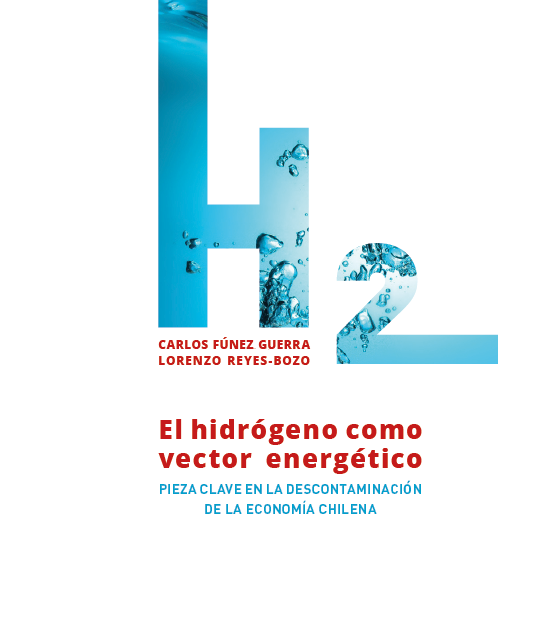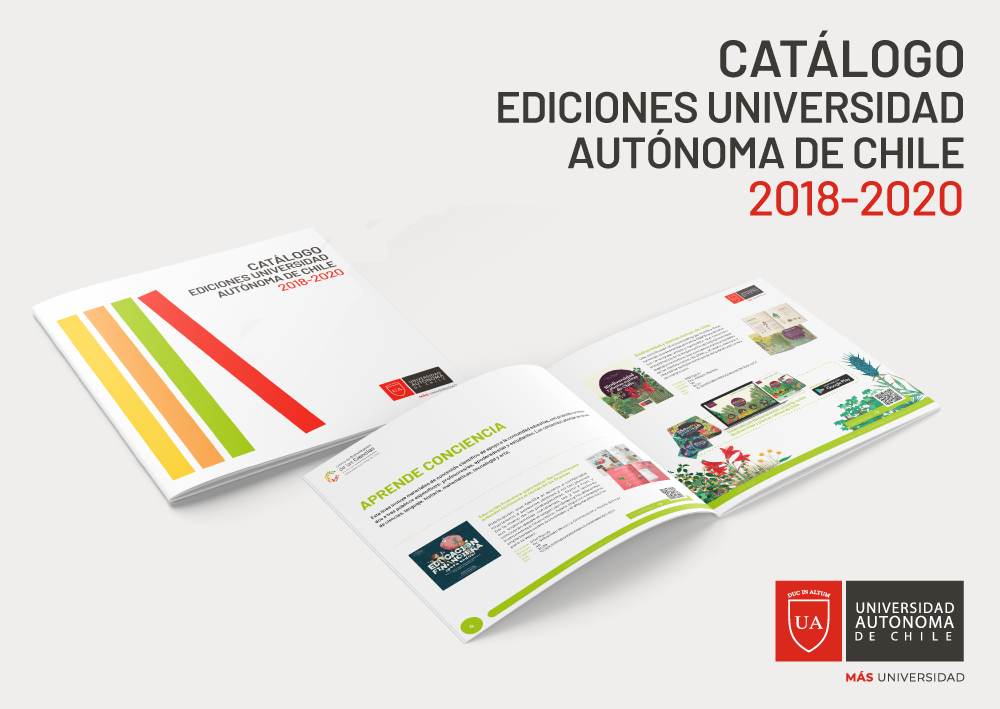El hidrógeno como vector energético: pieza clave en la descontaminación de la economía chilena
Palabras clave:
Hidrógeno, Energía, Energías renovablesSinopsis
Referencias
BloombergNEF (BNEF) (2019). Corporate Clean Energy Buying Surged to New Record in 2018. Bloomberg Company. Disponible en https://bit.ly/2UitIAI
Ministerio de Energía (2018). Energía 2050: Política energética de Chile, 2ª Edición, Santiago. Disponible en https://bit.ly/342buJr.
E4tech, UCL Energy Institute, Kiwa Gastec (2015). Scenarios for deployment of hydrogen in contributing to meeting carbon budgets and the 2050 target. Disponible en https://bit.ly/2KtcInr.
Kavadias, K., Apostolou, D., & Kaldellis, J. (2018). Modelling and optimisation of a hydrogenbased energy storage system in an autonomous electrical network. Applied Energy, 227: 574 - 586. DOI: 10.1016/j.apenergy.2017.08.050.
Ramírez Camargo, L., Valdés, J., Masip Macia, Y., & Dorner, W. (2019). Assessment of on-site steady electricity generation from renewable energy sources in Chile. Energy Procedia, 158: 1099-1104. DOI: 10.1016/j.egypro.2019.01.266.
Staffell, I., Scamman, D., Velazquez Abad, A., Balcombe, P., Dodds, P., Ekins, P., Ward, K. R. (2019). The role of hydrogen and fuel cells in the global energy system. Energy Environ. Sci.,12: 463-491. DOI:10.1039/C8EE01157E.
Stolten, D., Samsun, R. C., & Garland, N. (2016). Fuel Cell: Data, Facts and Figure. Weinheim: John Wiley & Sons. Disponible en https://bit.ly/347jnh5.
Comisión Nacional de Energía (2019). Balance de energía nacional. Santiago. Disponible en https://bit.ly/2SPtDDO.
Generadoras de Chile (2018). Reporte Anual 2017. Santiago. Disponible en https://bit.ly/2PfDO80.
Escenarios Energéticos (2018). Futuro de la energía en Chile: Factores de cambio y tendencias, Santiago. Disponible en https://bit.ly/2HyLXj8.
Vyhmeister, E., Aleixendri, C., Bermúdez, J.M., Pina, J., Fúnez, C., Rodríguez, L., Godoy-Faúndez, A., Higueras, P., Clemente-Jul, C., Valdés-González, H., Reyes-Bozo, L. (2017). A combined photovoltaic and novel renewable energy system: An optimized techno-economic
analysis for mining industry applications. Journal of Cleaner Production, 149: 999-1010. DOI: 10.1016/j.jclepro.2017.02.136.
Frankfurt School-UNEP Centre/BNEF (2018). Global Trends in Renewable Energy Investment 2018, Frankfurt.
Asociación Española del Hidrógeno (Aeh2). Tecnologías de hidrógeno y pilas de combustible. Madrid. http://www.aeh2.org/.
Gandía, L.M., Arzamendi, G., Diéguez, P.M. (2013). Renewable hydrogen technologies: production, purification, storage, applications and safety. Elsevier Sciencie. DOI: 10.1016/C2011-0-05152-9.
Coutanceau, C., Baranton, S., Audichon, T. (2017). Hydrogen electrochemical production. Cambridge: Academic Press.
Marini, S., Salvi, P., Nelli, P., Pesenti, R., Villa, M., Berrettoni, M., Zangari, G., Kiros, Y. (2012). Advanced alkaline water electrolysis. Electrochimica Acta, 82: 384-391. DOI: 10.1016/j.electacta.2012.05.011.
Godula-Jopek, A., Stolten, D. (2015). Hydrogen production: by electrolysis. Wiley-VCH.
Nel Hydrogen Electrolysers (2019). The World’s Most Efficient and Reliable Electrolysers. Disponible en https://bit.ly/2zoIs92.
Buttler, A., Spliethoff, H. (2018). Current status of water electrolysis for energy storage, grid balancing and sector coupling via power-to-gas and power-to-liquids: a review. Renewable and Sustainable Energy Reviews; 82 (3): 2440-2454. DOI: 10.1016/j.rser.2017.09.003.
Ursúa, A., Gandía, L.M., Sanchis, P. (2012). Hydrogen production from water electrolysis: current status and future trends. Proceedings of the IEEE. 100 (2): 410-426.
Department of Chemistry, Technical University of Denmark (KI/DTU), Fuel Cellsand Solid State Chemistry Department, Riso National Laboratory, TechnicalUniversity of Denmark, and DONG Energy (2008). Pre-investigation of water electrolysis. Disponible en https://bit.ly/2U5mxNq.
Laborde, M.A., González, F.R. (2010). La energía del hidrógeno. Buenos Aires: CYTED.
Diéguez, P.M., Ursúa, A., Sanchis, P., Sopena, C., Guelbenzu, E., Gandía, L.M. (2008). Thermal performance of a commercial alkaline water electrolyzer: experimental study and mathematical modelling. International Journal of Hydrogen Energy; 33 (24): 7338- 7354. DOI: 10.1016/j.ijhydene.2008.09.051.
Lehner, M., Tichler, R., Steinmüller, H., Koppe, M. (2014). Power-to-gas: technology and business models. Springer International Publishing.
Chen, W. Y., Seiner, J., Suzuki, T., Lackner, M. (2012). Handbook of climate change mitigation. Nueva York: Springer.
Moseley, P.T., Garche, J. (2014). Electrochemical energy storage for renewable sources and grid balancing. Elsevier.
Fuel Cells and Hydrogen 2 Joint Undertaking (2017). Development of Business Cases for Fuel Cells and Hydrogen Applications for European Regions and Cities, FCH JU 2017 D4259. Bruselas: Roland Berger. Disponible en https://bit.ly/2ZmUaj5.
Specht, M., Baumgart, F., Feigl, B., Frick, V., Stürmer, B., Zuberbühler, U., Sterner, M. y Waldstein, G., (2009). Storing renewable energy in the natural gas grid. Disponible en https://bit.ly/2ZhQtvD.
Hydrogen Fuel News. Hydrogen Power & Clean Energy Community. Disponible en https://bit.ly/2L8X2aa.
De Volder, M. (2015). Energy Park Mainz A Project for the Industry. Siemens. Disponible en https://bit.ly/2PinALk.
Asociación Española de Fabricantes de Automóviles y Camiones (Anfac), Asociación Española de Fabricantes de Equipos y Componentes para Automoción (Sernauto) y KPMG Asesores S.L. (2017). Agenda sectorial de la industria de la automoción.
Disponible en https://bit.ly/2MEXkIN.
Hydrogen Council (2017). How hydrogen empowers the energy transition. Disponible en https://bit.ly/2AJqHEJ.
Centro Nacional del Hidrógeno (CNH2). https://www.cnh2.es/.
Arboleda, J. Electrificación. Hyundai Motor España. Hyundai Motor Company. Disponible en https://bit.ly/30G70Gk.
Arboleda, J. Electrificación. Hyundai Motor España. Hyundai Motor Company. Disponible en https://bit.ly/30G70Gk.
Oliveira, J. y Arroyo, D. (2018). Hidrógeno: el coche de pila de combustible, en la rampa de despegue. Diario El Mundo, España. Disponible en https://bit.ly/2MH8AEv.
Fuel Cells Works (2019). HECTOR Project Launches to Demonstrate the Benefits of Hydrogen Fuel Cell technology to Decarbonise Garbage Truck Fleets. Mayo (30). Bruselas. Disponible en https://bit.ly/2ZncXLW.
Toyota Industries Corporation (2016). Public-Private Partnership to Test End-to-End Hydrogen Supply Chain. Yokohama. Disponible en https://bit.ly/2znzCIy.
Alstom. Disponible en https://bit.ly/343bitt.
Ferry shipping news (2019). Norled Will Have The World’s First Hydrogen-Electric Ferry. Disponible en https://bit.ly/2U5Azi3.
Dippo, J., Erikson, T. y Hess, K. (2009). Fuelcell-Hybrid Mine loader (LHD). Estados Unidos. DOI:10.2172/990290.
Fraile, D., Lanoix, J.Ch., Maio, P., Rangel, A. y Torres, A. (2015). CertifHy. Overview of the market segmentation for hydrogen across potential customer groups, based on key application áreas. Disponible en https://bit.ly/2A0xkPm.
International Copper Asociation (2017). El impacto de la minería del cobre en Chile. Implicancias económicas y sociales para el país. Santiago. Disponible en https://bit.ly/2LXFkX7.
Avaria, P. (2019). Tronadura en la minería: Avances en explosivos. Construcción Mineray Energía. Disponible en https://bit.ly/2PiDVQ9.
Sanchidrián, J.A., Muñiz, E. (2000). Curso de tecnología de explosivos. Madrid: Servicio de publicaciones Fundación Gómez Pardo.
Dávila, A. (2010). Estudio de los riesgos generados por agentes químicos en la fabricación de explosivos. Estudio de fin de máster. Disponible en https://bit.ly/342Q6UI.
Saffie, C. (2017). Fraunhofer Chile: a driver for innovation in Chile. Fraunhofer Chiel. Disponible en https://bit.ly/2U9sbOT.
ENAEX S.A. (2015). Presentación corporativa 2015. Disponible en https://bit.ly/33SVw4m.
Siemens Corporate Technology, University of Oxford, University of Cardiff, Science and Tecnology Facilities Council (2015). Green Ammonia. Disponible en https://bit.ly/2uKEhBU.
Miganei, L., Gock, E., Achimovicova, M., Koch, L., Zobel, H., Kahler, J. (2017). New residue-free processing of copper slag from smelter. Journal of Cleaner Production, 164: 534-542. DOI: 10.1016/j.jclepro.2017.06.209.
Okanigbe, D.O., Popoola, A.P.I., Adeleke, A.A. (2017). Characterization of Copper Smelter Dust for Copper Recovery. Procedia Manufacturing, 7: 121-126. DOI: 10.1016/j.promfg.2016.12.032.
Agrawal, A., Kumari, S., Bagchi, D., Kumar, V., Pandey, B.D. (2006). Hydrogen reduction of copper bleed solution from an Indian copper smelter for producing high purity copper powders. Hydrometallurgy, 84 (3–4): 218-224. DOI: 10.1016/j. hydromet.2006.05.010.
Kennedy, M., Miao, C., Wu, Q., Wang, Y., Ji, J., Roskilly, T. (2017). Optimal Hybrid Power System Using Renewables and Hydrogen for an Isolated Island in the UK. Energy Procedia, 105: 1388-1393. DOI: 10.1016/j.egypro.2017.03.517.
Vivas, F.J., De las Heras, A., Segura, F., Andújar, J.M. (2018). A review of energy management strategies for renewable hybrid energy systems with hydrogen backup. Renewable and Sustainable Energy Reviews, 82 (1): 126-155, DOI: 10.1016/j.rser.2017.09.014.
Sidki Uyar, T. y Besikci, D. (2017). Integration of hydrogen energy systems into renewable energy systems for better design of 100% renewable energy communities. International Journal of Hydrogen Energy, 42 (4): 2453-2456. DOI: 10.1016/j. ijhydene.2016.09.086.

Publicado
Categorías
Licencia

Esta obra está bajo una licencia internacional Creative Commons Atribución-CompartirIgual 4.0.

